
Erotic Room
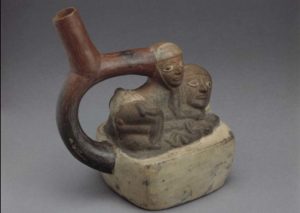
In today’s world, we tend to classify all representations of nudity, genital organs or sexual acts as erotic imagery. However, representations of sexuality among the cultures of ancient Peru introduce us to another perspective on such imagery.
The pottery vessels we see in these rooms were used to record the rituals and mythology of pre-Columbian societies, and they also provide many details of the world in which ancient Peruvians lived, and the relationships between the inhabitants of that world. The sexual activities represented in these pottery vessels alluded to these relationships and interactions.
Read more...

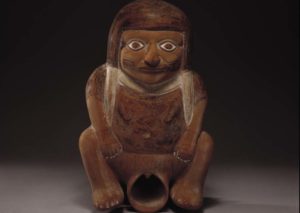
Over a period of 2000 years, male and female human bodies were modeled in clay by pre-Columbian pottery makers. The human body was depicted in the form of ceremonial vessels through which different types of liquids flowed, symbolically activating and animating these objects.
In pottery, the female form was represented as a receptor vessel, but it was also depicted as an entity that produced bodily fluids. Women are represented being touched, caressed, kissed and penetrated. These pottery vessels show women being fertilized, pregnant, giving birth, feeding and nourishing. They are also represented as sexually active individuals, the catalysts for the release of seminal fluid from their male partners.
Read more...

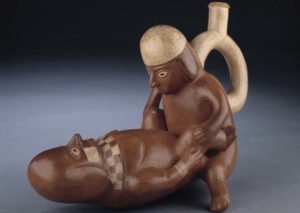
Sexual representations in pre-Columbian Peruvian art are associated with fertility rites, sacrifice ceremonies and ancestor worship, and they are a very important source of information regarding the world view of the societies of ancient Peru.
In the earthly world, human beings are joined in the act of procreation. New life is created through the union of a man and woman. Couples were even depicted with the fruit of their union in their bed.
Read more...

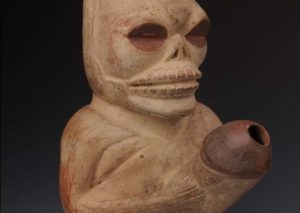
In the Andean world view, the beings that inhabit the different worlds interact and participate in sexual relations.
The dead are shown as sexually active beings, interacting with each other and with living people. The dead participate in sexual activities that are non-procreative, such as masturbation.
Read more...

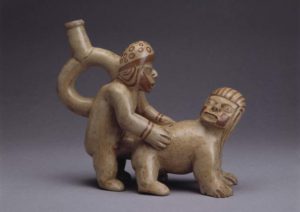
In pre-Columbian art we also find depictions of humans involved in non-reproductive sexual acts, such as anal sex, fellatio and masturbation. These ritual sexual practices served to symbolically link the world of the living with the world of the dead. It seems likely that these practices were associated with the period of the agricultural year when ancient Peruvians acknowledged the presence of their ancestors in the earthly world, in the form of rainfall and the waters that swelled rivers.
Read more...

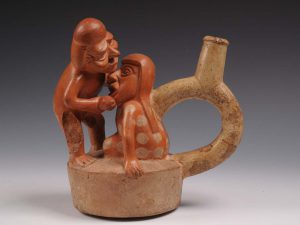
In these exhibition rooms the complementary duality of feminine and masculine is displayed, expressed in the forms and images of the pottery objects created by the artists of ancient Peru.
Men are depicted as fertilizing agents, projecting their virility and potency. Men are shown touching, caressing, kissing, as well as being touched, caressed and kissed. They are also depicted as passive receptors of the propitiatory actions of their female partners, particularly when they are presented as inhabitants of the underworld, with cadaverous characteristics, a condition which does not inhibit in any way their sexual activity.
Read more...


The dead are depicted with cadaverous bodies, but at the same time with erections, indicating their ability to fertilize the world they inhabit; the underworld which is the realm of Pachamama, or Mother Earth.
Read more...
